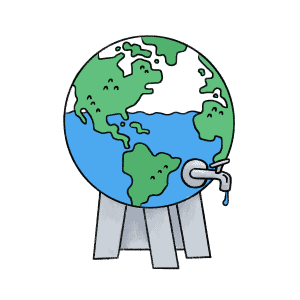The University of Saskatchewan furthered its role in global freshwater research last month after the U of S-based organization Global Water Futures signed a five-year memorandum of understanding with Natural Resources Canada. The partnership will see an increased commitment to collaboration in both organizations’ research.
While GWF and NRCan — the federal ministry responsible for the development of Canada’s natural resources — have worked together to study glaciers in the Canadian Rockies and the Northwest Territories, the MOU is expected to bring universities, government sectors and other organizations together for a multisectoral approach to water research.
Founded in 2016, GWF is the world’s largest university-led project for freshwater research. The project is slated to last for seven years and is funded by a $77.8 million endowment from the Canada First Research Excellence Fund.
John Pomeroy, director of GWF and Canada research chair in water resources and climate change, says that the MOU formalizes the research relationship between the GWF and NRCan and may produce new opportunities for U of S researchers.
“We’ve mutually supported research for a number of years, so in some cases, it was formalized in something that already existed, and in other cases, it’s developing things that could be quite new,” Pomeroy said. “We would like to see an NRCan scientist who would engage with the U of S graduate students and provide opportunities, in the end, for our students with the federal government.”
The project’s goal is to provide solutions to global water threats, with three desired outcomes: to forecast water-based natural disasters, to accurately predict water quality and quantity, and to provide risk-management data to government.
Pomeroy says that the MOU with NRCan provides GWF with a greater scope of geological data and more specific information about freshwater through data collected on river basins, groundwater collections and glaciers. Such data, Pomeroy says, is derived from NRCan’s use of satellites for remote sensing.
The GWF program has over 350 partners from countries across the globe and engages with them through interdisciplinary approaches. Pomeroy says that an example of this is the work GWF has done with Indigenous communities in Canada.
“We get away from the [university], [we] talk to the users about the sorts of problems that they have, … and we engage with them throughout the whole research project,” Pomeroy said. “We met with Indigenous groups several times, talked about areas of joint interest and found out some of the water problems they had and then jointly developed the call for proposals to address some of those problems.”
Ultimately, Pomeroy says that freshwater research, as seen through the MOU between the GWF and NRCan, is some of the most pressing research being done today.
“With the increasing development, growing populations around the world and the biggest challenge humanity has ever faced in its existence — global climate change — the impacts are mostly on water, and that has made the study of water more important than ever,” Pomeroy said. “It’s the time to join in with us to develop solutions to the problems that we have.”
For Pomeroy, the seriousness of these issues has contributed to the overall interest in and strength of the GWF project.
“[Climate change] encourages students who are interested in the natural environment or communities to really get involved in the study of water and help with some of these solutions,” Pomeroy said. “We’ve been able to take on hundreds of students at the graduate level and post-graduate level in GWF. We have the largest concentration of water scientists in the world at the U of S and the strongest water research program in Canada.”
—
Aqsa Hussain
Graphic: Jaymie Stachyruk / Graphics Editor